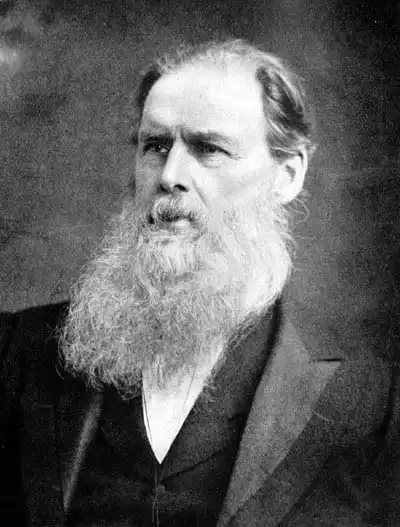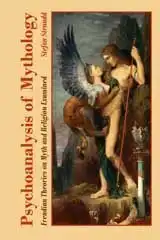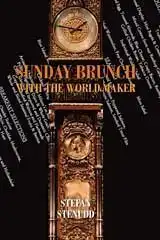Edward B. Tylor:
|
by Stefan Stenudd |
Also the above mentioned Max Müller and Andrew Lang expressed their admiration of it.
Edward Burnett Tylor (1832-1917) was an English anthropologist, whose interest in the discipline started at travels to Mexico and Central America. In 1896 he became the first Professor of Anthropology at Oxford.
Tylor's main theory, on which he bases his analysis of mythology as well as other cultural manifestions of what he calls primitive society, is that of animism, the belief that there is life in many or all objects and phenomena. This aspect dominates his book Primitive Culture. Out of the 19 chapters of the book, seven are devoted to the theme already in their titles. Still, it appears frequently in the other chapters, too.
Tylor sees animism as the cause of mythology as a whole:
First and foremost among the causes which transfigure into myth the facts of daily experience, is the belief in the animation of all nature, rising at its highest pitch to personification. [Edward B. Tylor, Primitive Culture: Researches into the Development of Mythology, Philosophy, Religion, Art, and Custom, vol. 1, London 1871, 258.]
Thus, the gods as well as the other active characters of myths are born out of animism. It is a wonderfully simple explanation, an Ockham's razor of mythology. Utilizing this simple formula and its consequences, Tylor is certain of being able to dissect just about every myth from every culture:
So uniform indeed is such development, that it becomes possible to treat myth as an organic product of mankind at large, in which individual, national, and even racial distinctions stand subordinate to universal qualities of the human mind. [Tylor 1871, vol. 1, 376.]
Tylor sees it as a process of analogy: what seems like something must in some way be that something. What we use as poetic metaphor and such had quite another significance in the distant past: "Analogies which are but fancy to us were to men of past ages reality." [Tylor 1871, vol. 1, 269.]
He compares it to the experience of the child, unable to make distinctions between reality and the impressions of it. He quotes from Victor Hugo's Les Misérables about Cosette and her doll: "imagine that something is someone." ["Se figurer que quelque chose est quelqu'un." Tylor 1871, vol. 1, 258.] Tylor likens the human intellect in its early stage to that of children and childlike ideas: "in our childhood we dwelt at the very gates of the realm of myth." [Tylor 1871, vol. 1, 257.]
In the offensive manner he shared with his colleagues of the time, Tylor claims that people of hunter-gatherer tribes, yet untarnished by western civilization, are also unevolved from that childhood of mankind. He calls them "savages" as do his contemporaries, and shares their conviction that their mythologies and cultures must resemble those of our distant ancestors. That is the context in which he uses the vast 19th century documentation of myths and beliefs in other cultures, judging them by this unfair and questionable comparison:
Savage mythology may be taken as a basis, and then the myths of more civilized races may be displayed as compositions sprung from like origin, though more advanced in art. [Tylor 1871, vol. 1, 257.]
It is strange that neither Tylor nor his colleagues would conclude what is quite evident from the idea of evolution: If mythology can evolve, why wouldn't that be the case with mythologies of any culture? Their reason for neglecting this possibility is clear from their analysis of such societies as a whole. They regard them as unevolved, as authentic remnants of cultures of old, as if they were little but museums.
This view probably stemmed from a longing in Tylor et al., which was much more passionate about revealing the secret of their own society's distant past than about understanding very different cultures of their own time.
He hints this priority in the conclusion of his book: "the study of the savage and barbaric intellect opens to us the study of Mythology." [Tylor 1871, vol. 2, 404.] He believes he can use present minds of other cultures to revisit the minds of his own culture's distant past.
At least Tylor also admits to some artistic qualities of the myths of old, thereby surely also those of the "savages" of his time: "Fully to understand an old-world myth needs not evidence and argument alone, but deep poetic feeling." [Tylor 1871, vol. 1, 276.]
He also recognizes that even a society he would call civilized can plunge into that childishness of myth. He mentions the 3rd century theologian Origen's declaration that "the stars are animate and rational, moved with such order and reason as it would be absurd to say irrational creatures could fulfill." [Tylor 1871, vol. 1, 263f.]
Werewolves and Wild Boys
Also in his contemporary world Tylor sees examples of this childishness, as in the persistent belief in werewolves, a notion "quite consistent with the animistic theory that a man's soul may go out of his body and enter that of a beast." [Tylor 1871, vol. 1, 279.] And he is sure that the werewolf's decreasing appearance in folklore "has been not so much for lack of superstition, as of wolves." [Tylor 1871, vol. 1, 283.]Still he persists with the view of a kind of ladder from the primitive to the civilized, leaving the former in hopeless folly whereas the latter is enlightened, though remaining playful at times:
The rude man's imaginations may be narrow, crude, and repulsive, while the poet's more conscious fictions may be highly wrought into shapes of fresh artistic beauty, but both share in that sense of the reality of ideas, which fortunately or unfortunately modern education has proved so powerful to destroy. The change of meaning of a single word will tell the history of this transition, ranging from primaeval to modern thought. From first to last the processes of phantasy have been at work; but where the savage could see phantasms, the civilized man has come to amuse himself with fancies. [Tylor 1871, vol. 1, 284.]
As if poets didn't exist in antiquity, or for that matter in present day tribes of hunters and gatherers.
Still, Tylor's theory of animism, and how it leads to myth as well as what we call religious concepts, continues to have value in the investigation of myths. There is not really any evolution of the human mind we can hope to trace with any clarity through the history of some mere tens of thousands of years. That timespan is far too short for what we consider significant evolutionary steps. We had better regard what we find as expressions of the human mind as we know it, wherever and whenever.
Tylor compares to the child and in doing so admits to the consistency of the patterns of human thought. We are quite the same at birth. It's in the duration of our lives that we increasingly adapt to our surroundings as they are there and then, but we do it with the same basic mental capacities and processes.
The importance of the environment in how any child develops, regardless of its background, would be evident to Tylor through the much discussed examples of so-called feral children in the 19th century, who were returned to society after several years in the wilderness. According to such reports, they had regressed to animal behavior, needing a long and painstaking process to develop social skills and language.
The most famous of these cases was that of Victor of Aveyron in the beginning of the 19th century. His story was again made famous in 1970 by the François Truffaut movie L'Enfant sauvage. The boy was found at the age of around twelve, after several years in the woods, and great efforts were made to civilize him, some of them in vain. His condition after years in the wilderness was food for thought in the discussion about what really constitutes the difference between the human being and the animals, which had been raised during the Enlightenment.
Much has later been questioned about these feral children. Some cases have been found to be pure hoaxes, other ones seem to have additional circumstances, such as autism. The latter would probably be the case with Victor of Aveyron. [Serge Aroles, L'énigme des enfants-loups, Paris 2007, 211ff.] But in the 19th century the discussion of them made it clear that the environment has a much more profound impact on human behavior and capacity than evolution.
Therefore, Tylor would have had reason to question his own assumptions about primitivity and the so-called savage. Instead of assuming that some people are less evolved than others, which would contradict the basic mechanism of evolution since it includes all of biology, he should have pondered the evidence pointing to birth meaning so much less than upbringing.
All people have the capacity to adapt to the society in which they are placed. This also implies that there are no fundamental differences in mental capacity between people of different origin.
All of us have much more in common than what separates us. Also, there is a lot we share with the children we once were. Like the child we tend to regard at least everything that moves as something alive more or less like us, until we are conditioned to think otherwise. What is animate in the sense of moving must be animate in the sense of somehow being alive. And what is not obviously moved by something else must move of its own accord, its own will. Before finding out what else might be the mover, it is natural for any living creature to assume the object moves by itself.
It is an instinct for survival. Animals are quick to spot any kind of movement, since it can be a threat, and would not refrain from treating it as such until convinced otherwise. We have it too, most definitely, even when we are old and hopefully wise. Any surprising movement catches our eye and needs to be understood before it is ignored.
Primeval man would have regarded anything moving as alive, until assured of the opposite. Soon enough, the waves of the sea and the swaying branches of the trees were revealed to be caused by the wind. But then, what about the wind? And what about the sun and the moon traversing the whole sky from east to west? So many things were moving mysteriously before the eyes of primeval man, and they were difficult to turn away from before given some kind of explanation. Animism and its associated myths were methods to avoid constant fear and fixation.
As for objects that are not seen to move by themselves, but are still considered as containing life in animistic beliefs, Tylor gives vivid examples. But he neglects to present the evident rational explanation for them.
He mentions that Kukis of Southern Asia kill a tiger that has killed one of them, or any other tiger. Furthermore, they cut down a tree if someone has died by something falling from it. [Tylor 1871, vol. 1, 259.] Well, there is no denial that these actions were precautionary, whatever the metaphysical explanation for them. And this may be a universal ingredient in regarding inanimate objects as animate. If they are cause for concern they need to be treated in much the same manner.
The primary impulse of any animal is self-preservation, with regard to the individual as well as the group. Not only animals can be a threat, so anything with which primeval man had the experience of damage, potential or real, he would need to regard with caution as if it were alive and out to get him. Animism would be our impression of it, whether that is the most relevant description or not.
It would be the same with inanimate objects primeval man found beneficial in one way or other. His relation to them — in our perspective — could easily come across as animistic.
It is important to remember that animism is our explanation of the phenomenon and not necessarily the most adequate one. There are several examples of the awareness of symbols and analogies in cultures of the distant past as well as those of present day hunter-gatherers. Their animism is our perception, not necessarily in their understanding of it. Still, the process leading to a view of nature as a whole, with all its components, as animate is a reasonable one from both observation and self-preservation.
Animism as an active force in forming both myth and some kind of pantheon is definitely to be taken into account. The core of it is to find the natural patterns of human thought and explore what they lead to. We are likely to find that our mental process is still largely controlled by our instincts and other components we share with most other animals.
NEXT
James G. Frazer: Myth as Ritual.
Mythology Meanings Menu
- Introduction
- Mythology and Fable in the First Encyclopedia: Louis de Jaucourt
- Thomas Blackwell: Instruction by Fable
- Antoine Banier: Mythology as Idolatry
- Eusebius: Myths as Heathen Remnants
- Plutarch: Battle of Daemons
- Euhemerus: Myth as Actual History
- A Scientific Revolution of Mythology
- Andrew Lang: Rational versus Irrational
- Max Müller: Disease of Language
- Edward B. Tylor: Animism Turned Personification
- James G. Frazer: Myth as Ritual
Some of My Books:Click the image to see the book at Amazon (paid link).
The Greek philosophers and what they thought about cosmology, myth, and the gods. |
MENU
Creation Myths Around the World
How stories of the beginning began.
The Meanings of Mythology
Theories through history about myth and fable.
Archetypes in Myths
The mythological symbols and what they stand for.
The Logics of Myth
Patterns of creation.
CREATION MYTHS IN DEPTH
Creation in Rig Veda 10:129
The paradox of origin, according to an Indian myth.
Genesis 1
The first creation story of the bible scrutinized.
Enuma Elish
The ancient Babylonian creation myth.
Xingu Creation of Man
The insoluble solitude of gods and humans.
Contact
About Cookies
ON MY OTHER WEBSITES
Psychoanalysis of Myth
What Sigmund Freud and C. G. Jung thought about myths, their origins and meanings.
Myth of Creation
An introduction to the subject of creation myths and the patterns of thought they reveal.
Cosmos of the Ancients
What the Greek philosophers believed about the cosmos, their religion and their gods.
Life Energy
The many ancient and modern life force beliefs all over the world explained and compared.
Taoistic
Taoism, the ancient Chinese philosophy of life explained. Also, the complete classic text Tao Te Ching online.
 Stefan Stenudd
Stefan Stenudd
About me
I'm a Swedish author and historian of ideas, researching the thought patterns in creation myths. I've also written books about Taoism, the Tarot, and life force concepts around the world. Click the image to get to my personal website.

 Archetypes of Mythology
Archetypes of Mythology Psychoanalysis of Mythology
Psychoanalysis of Mythology Cosmos of the Ancients
Cosmos of the Ancients Life Energy Encyclopedia
Life Energy Encyclopedia Sunday Brunch with the World Maker
Sunday Brunch with the World Maker Fake Lao Tzu Quotes
Fake Lao Tzu Quotes